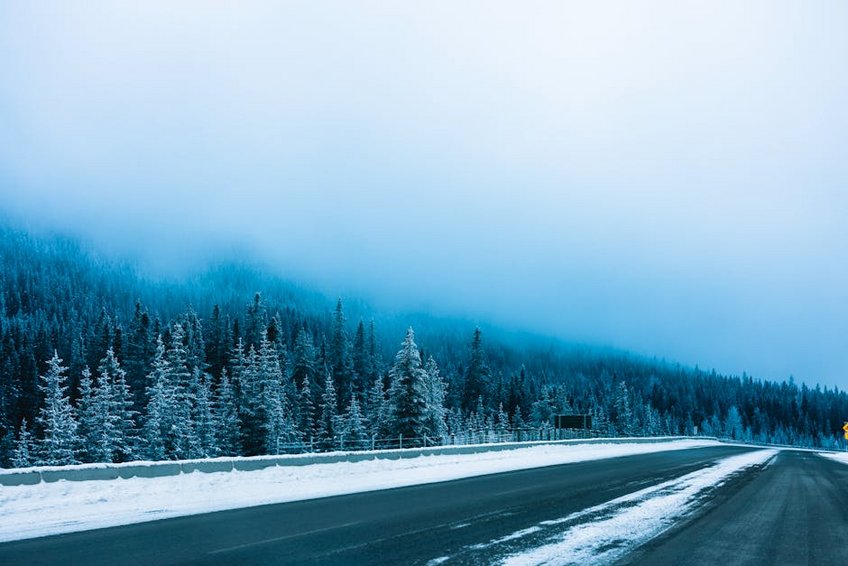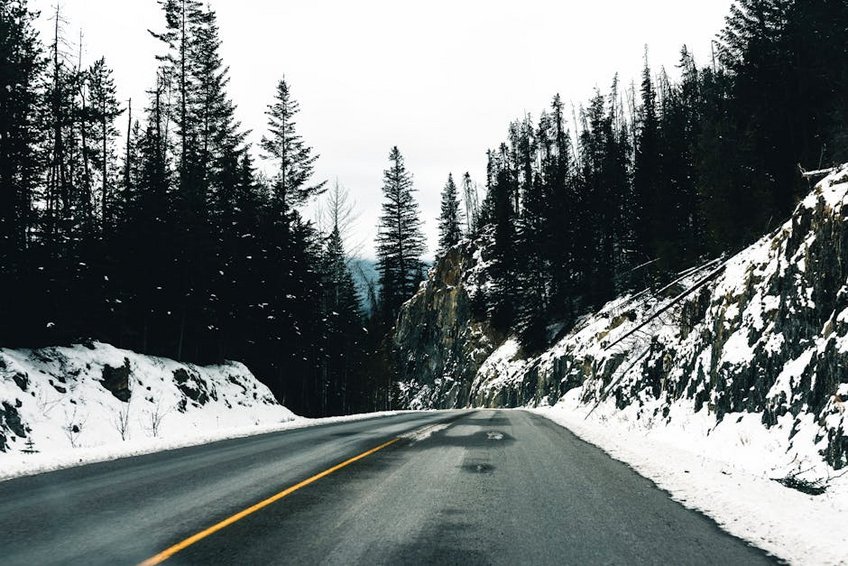Montana Glacier National Park Winter: A Snowy Wilderness Adventure
Exploring Montana Glacier National Park winter transforms this iconic landscape into a serene, snow-blanketed paradise that feels worlds away from its bustling summer persona. As you venture into this frosty wonderland, you’ll discover a quieter, more intimate side of the Rockies, where frozen waterfalls glitter like diamonds and wildlife leaves fresh tracks in pristine snow. The Montana Glacier National Park winter experience offers unparalleled opportunities for cross-country skiing through silent forests, snowshoeing along frozen lakes, and witnessing the Northern Lights dance above snow-capped peaks. While many summer visitors crowd the Going-to-the-Sun Road, winter adventurers enjoy solitary moments in nature’s grand amphitheater, with fewer crowds and breathtaking vistas at every turn. You’ll need to prepare for sub-zero temperatures and limited services, but the reward is an authentic wilderness encounter that will leave you with lifelong memories of America’s crown jewel in its most dramatic seasonal dress.
Montana Glacier National Park Winter Essential Information – What Every Traveler Should Know
Before embarking on your Montana Glacier National Park winter journey, understanding the fundamental aspects of this seasonal transformation is crucial for both safety and enjoyment. The park undergoes significant changes from November through April, with most facilities closing and access limited to specific areas. Winter officially blankets the landscape from late October, with deepest snow accumulations occurring between December and February, creating ideal conditions for snow-based activities while presenting unique challenges for navigation and comfort. You’ll find that temperatures frequently drop below freezing, averaging between 20°F (-7°C) and 30°F (-1°C) during daytime hours, though wind chill can make it feel considerably colder, especially at higher elevations. Road access becomes restricted, with only the Lake McDonald Valley remaining plowed and accessible by vehicle, while the legendary Going-to-the-Sun Road transforms into a groomed corridor for snow sports enthusiasts. Wildlife behavior shifts dramatically during these months, with animals like bighorn sheep, mountain goats, and the occasional wolf becoming more visible against the white backdrop as they descend to lower elevations in search of food.
Winter Park Operations and Accessibility
- Most visitor centers close from October to May, with Apgar Visitor Center offering limited weekend hours and current conditions information for winter visitors planning their Montana Glacier National Park winter experience.
- Road maintenance focuses primarily on plowing the Lake McDonald area, while other park roads become designated snow trails for skiing and snowshoeing, requiring special permits for overnight winter camping adventures.
- Cell service becomes extremely spotty throughout the park during winter months, making satellite communication devices essential safety equipment for backcountry exploration beyond developed areas.
- Budget options range from $50-100 per day covering park entry fees, self-guided activities like snowshoeing on rented equipment, and accommodations in nearby towns like Columbia Falls with basic motels offering winter discounts.
- Mid-range experiences costing $150-300 daily include guided snowshoe tours, cross-country ski rentals, comfortable lodging at park-affiliated properties like Lake McDonald Lodge, and dining at available restaurants in West Glacier.
- Luxury winter adventures exceeding $400 per day feature multi-day guided backcountry skiing expeditions, stays at exclusive winter-only properties with hot tubs and fireplaces, private photography tours, and gourmet meal packages with local cuisine.
- National Park Service Official Winter Guide
- U.S. News Travel Seasonal Recommendations
Weather Patterns and Safety Considerations
Montana Glacier National Park winter weather demands respect and preparation, as conditions can change rapidly from clear skies to whiteout blizzards within hours. The continental climate creates dramatic temperature swings, with records showing extremes from -40°F (-40°C) during Arctic outbreaks to surprisingly mild 40°F (4°C) days during chinook wind events. Avalanche danger becomes a significant concern in steep terrain, especially after heavy snowfall or during periods of rapid warming, requiring you to check daily avalanche forecasts before venturing into backcountry zones. Proper layering with moisture-wicking base layers, insulating mid-layers, and waterproof outer shells becomes non-negotiable for comfort and safety, while traction devices for boots provide essential stability on icy trails. Daylight hours shorten considerably during December and January, with sunset occurring as early as 4:30 PM, necessitating early starts and carrying headlamps with extra batteries for any extended outdoor activities.
Montana Glacier National Park Winter Planning Your Trip – Seasonal Strategy
Strategic planning transforms your Montana Glacier National Park winter visit from a challenging excursion into an unforgettable adventure, requiring careful consideration of timing, budget, and preparation. Unlike summer trips where spontaneity is easier, winter excursions demand advanced reservations for limited accommodations and thorough equipment checks to ensure safety in the harsh conditions. You’ll need to decide between a day-trip approach from gateway communities like Whitefish or Kalispell versus an immersive multi-day experience staying at one of the park’s winter lodging options, each offering different advantages for various traveler types. Budget considerations shift significantly from summer visits, with potential savings on accommodations offset by necessary investments in specialized gear rentals or guided services for activities like ice climbing or avalanche safety courses. Transportation planning becomes particularly important, as rental cars require either four-wheel drive or snow chains, while shuttle services operate on reduced schedules that might not align with your preferred itinerary timing.
Best Time to Visit Montana Glacier National Park Winter
Determining the ideal timing for your Montana Glacier National Park winter experience depends heavily on your preferred activities and tolerance for extreme cold, with each month offering distinct advantages. December through February delivers the deepest snowpack and most reliable conditions for skiing and snowshoeing, though temperatures frequently plunge below zero Fahrenheit (-18°C) and daylight remains limited to about eight hours. January typically offers the park’s most dramatic winter scenery with heavy snow accumulations creating pristine landscapes, but also presents the highest avalanche danger in backcountry areas requiring advanced skills and equipment. March emerges as a sweet spot for many visitors, combining adequate snow coverage with longer daylight hours and moderating temperatures that often reach the 30s Fahrenheit (around 0°C), making outdoor activities more comfortable. Early winter in November and late season in April provide transitional periods with thinner snow cover but fewer visitors, offering opportunities for photography during shoulder seasons when freezing temperatures create spectacular ice formations along waterfalls and lake shores.
Budget Planning and Costs for Winter Visits
Essential Preparation Checklist for Winter Conditions
Preparing properly for your Montana Glacier National Park winter adventure requires assembling both gear and knowledge to ensure safety and comfort throughout your visit. Begin by checking weather forecasts and road conditions regularly in the days leading up to your trip, as winter storms can materialize quickly and alter access to various park areas without warning. Your equipment checklist should include insulated waterproof boots rated for sub-zero temperatures, multiple layering options for upper and lower body, waterproof gloves or mittens with liners, and goggles or sunglasses with UV protection to prevent snow blindness. Navigation tools become critically important with snow covering trails and landmarks, requiring you to carry detailed topographic maps, compass, GPS device, and knowledge of how to use them in whiteout conditions. Emergency supplies should include a well-stocked first aid kit, emergency blanket, fire-starting materials, high-energy food, and extra water or means to melt snow, as dehydration occurs quickly in dry winter air despite the cold temperatures.

Montana Glacier National Park Winter Top Attractions and Activities – Frozen Wonders
Montana Glacier National Park winter unveils a completely different set of attractions and activities compared to the summer season, focusing on snow-based adventures and unique seasonal phenomena. The frozen landscape transforms familiar summer landmarks into icy sculptures, with Lake McDonald’s surface becoming a vast expanse of snow-covered ice and towering peaks wearing thick white mantles that glisten in the low winter sun. Ranger-led snowshoe walks introduce you to winter ecology and animal tracking, while self-guided explorations allow you to discover hidden frozen waterfalls and snow-drifted valleys at your own pace. Wildlife viewing becomes particularly rewarding during these months, with increased chances of spotting elk, moose, and coyotes against the white backdrop, though you must maintain safe distances as animals conserve precious energy. The reduced visitor numbers create opportunities for solitude and reflection, whether you’re cross-country skiing along the McDonald Creek trail or simply sitting quietly to absorb the profound silence of a snow-covered forest.
Must-See Winter Highlights and Iconic Spots
Certain locations within Montana Glacier National Park winter deserve special attention for their exceptional beauty and accessibility during the snowy months, creating picture-perfect moments you’ll treasure forever. Lake McDonald’s frozen shoreline offers breathtaking views of the surrounding mountains reflected in sections of clear ice, with opportunities for ice skating when conditions permit and park staff confirm thickness safety. The Apgar Village area serves as the winter hub with its plowed roads, limited services, and access to multiple trailheads for snowshoeing and skiing adventures through snow-laden cedar and hemlock forests. McDonald Creek becomes a frozen masterpiece with ice formations decorating the rocks and waterfalls, while the sound of water flowing beneath the ice creates an enchanting auditory experience unique to winter. The Going-to-the-Sun Road, closed to vehicles beyond Lake McDonald, transforms into a winter recreation corridor where you can ski or snowshoe for miles with minimal elevation gain, offering stunning views of Heaven’s Peak and other dramatic summits without summer crowds.
Hidden Gems and Local Winter Favorites
Beyond the well-known attractions, Montana Glacier National Park winter conceals several lesser-known spots that locals cherish for their solitude and special winter characteristics. The Avalanche Lake trail, inaccessible to summer hikers during winter, becomes a challenging snowshoe route leading to a frozen lake basin surrounded by icy cliffs and occasional ice climbers practicing their craft. John’s Lake Loop offers a shorter, family-friendly snowshoe experience through magical forests where snow hangs heavily from branches and animal tracks crisscross the trail, providing excellent wildlife observation opportunities. The less-visited Two Medicine area, though requiring more effort to access, rewards determined visitors with frozen waterfalls, potential wolf sightings, and breathtaking views of Rising Wolf Mountain dusted in snow. Local guides often share secrets like specific viewpoints along Camas Road where you might witness the Northern Lights on clear, cold nights, or hidden hot springs in the surrounding national forest that provide warm respite after days spent in the winter chill.
Montana Glacier National Park Winter Practical Travel Information – Logistics and Accommodation
Navigating the practical aspects of your Montana Glacier National Park winter visit requires understanding the seasonal changes to transportation, services, and accommodation options throughout the region. Gateway communities like West Glacier, Whitefish, and Columbia Falls become essential bases for winter visitors, offering services that diminish within the park boundaries during these months. You’ll find that most dining options inside the park close entirely, necessitating trips to surrounding towns for meals or bringing your own food supplies, though a few establishments near the west entrance maintain limited winter hours. Rental equipment for winter sports becomes crucial, with several outfitters in nearby towns offering snowshoes, cross-country skis, ice cleats, and other essential gear for reasonable daily rates, often with discounts for multi-day rentals. Communication planning takes on added importance, as cell service becomes unreliable beyond developed areas, making satellite messengers or personal locator beacons wise investments for backcountry travelers venturing beyond the main corridors.
| Accommodation Type | Features and Location | Price Range (USD/Night) |
|---|---|---|
| Park Lodges | Limited winter openings, rustic charm, proximity to trails, basic amenities | $120-250 |
| Gateway Town Hotels | Full services, restaurants, equipment rental nearby, shuttle access | $80-180 |
| Vacation Rentals | Kitchen facilities, multiple bedrooms, often with hot tubs, more space | $150-400 |
| Backcountry Huts | Reservation required, primitive conditions, incredible solitude, bring own gear | $25-75 per person |


